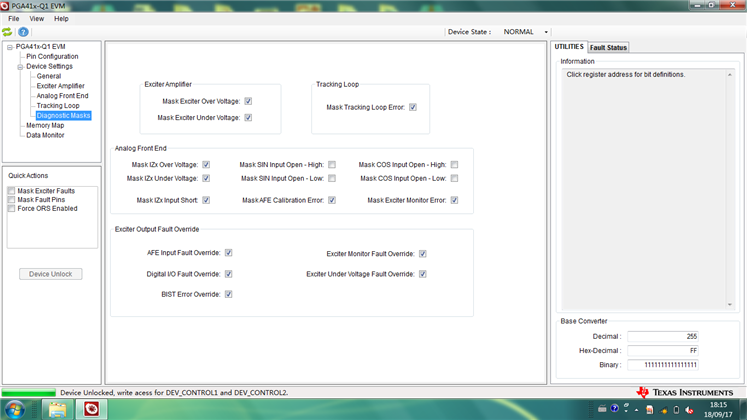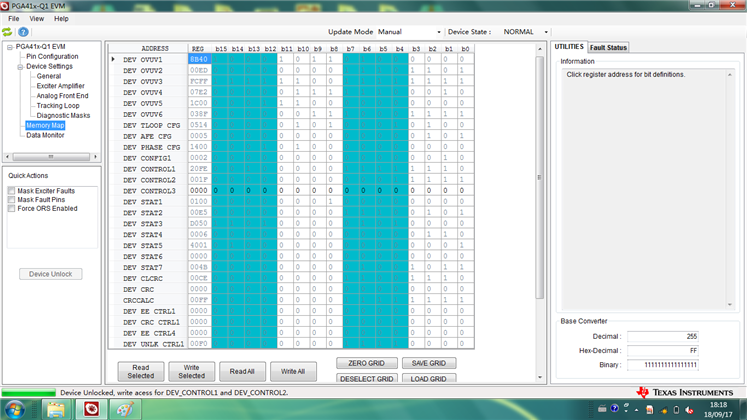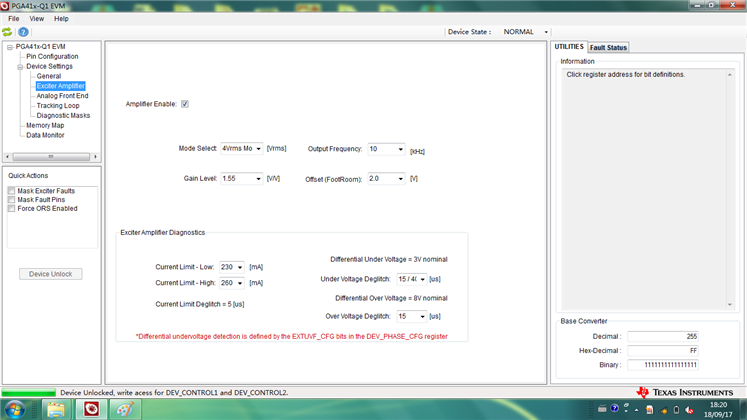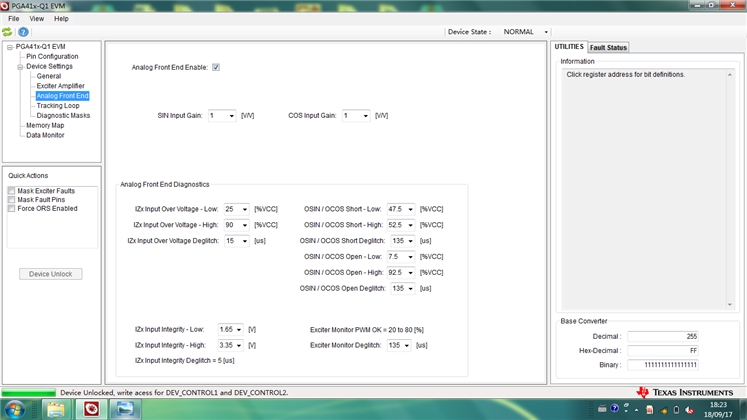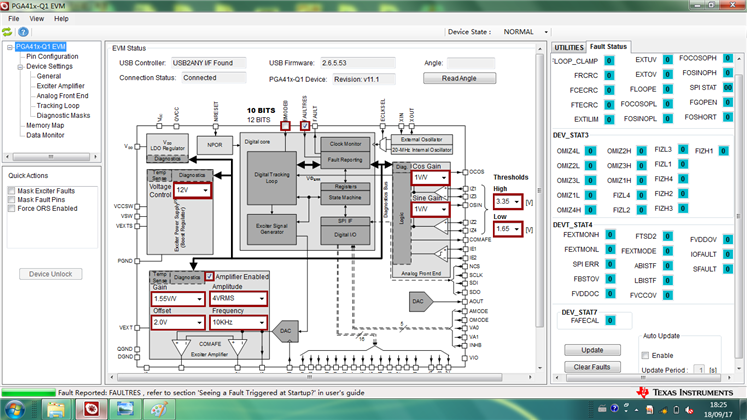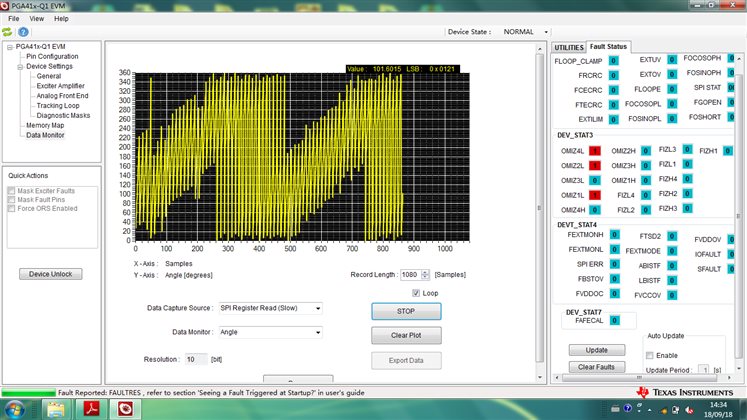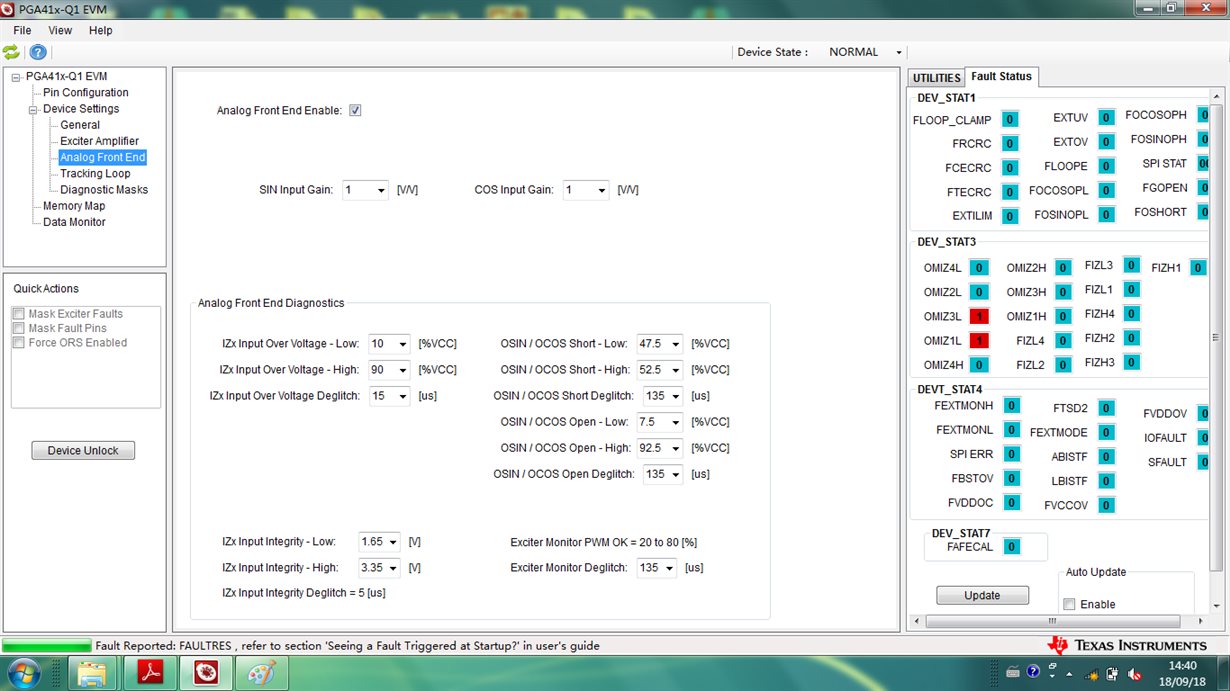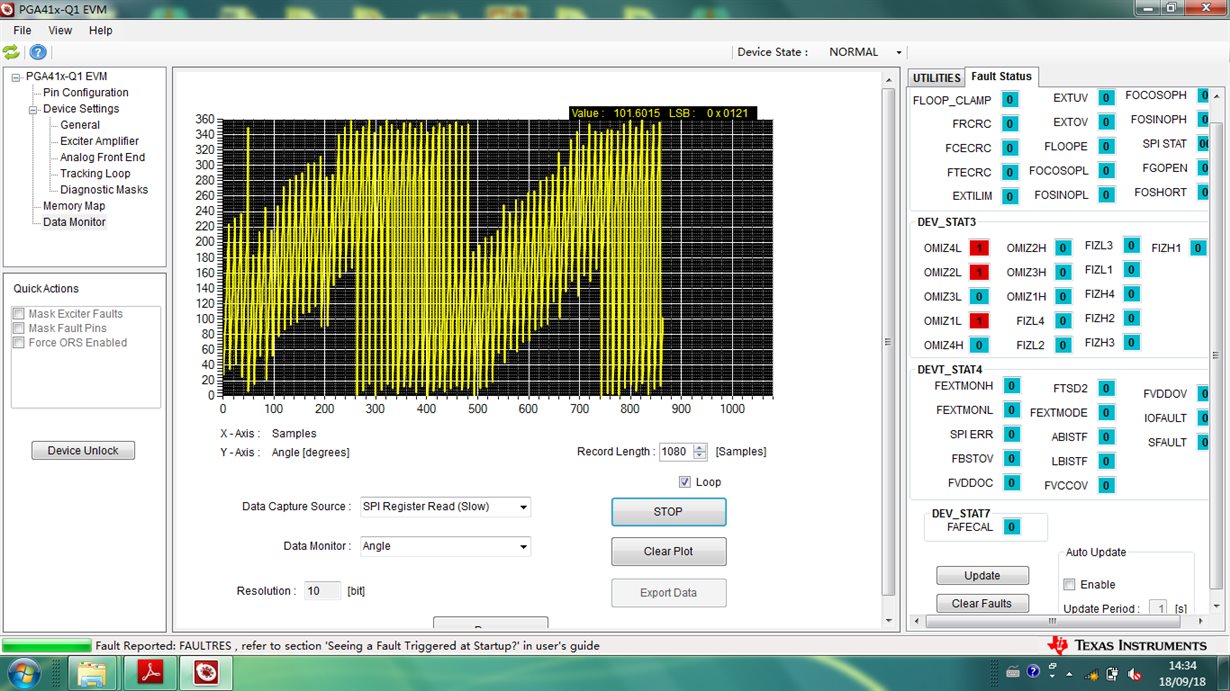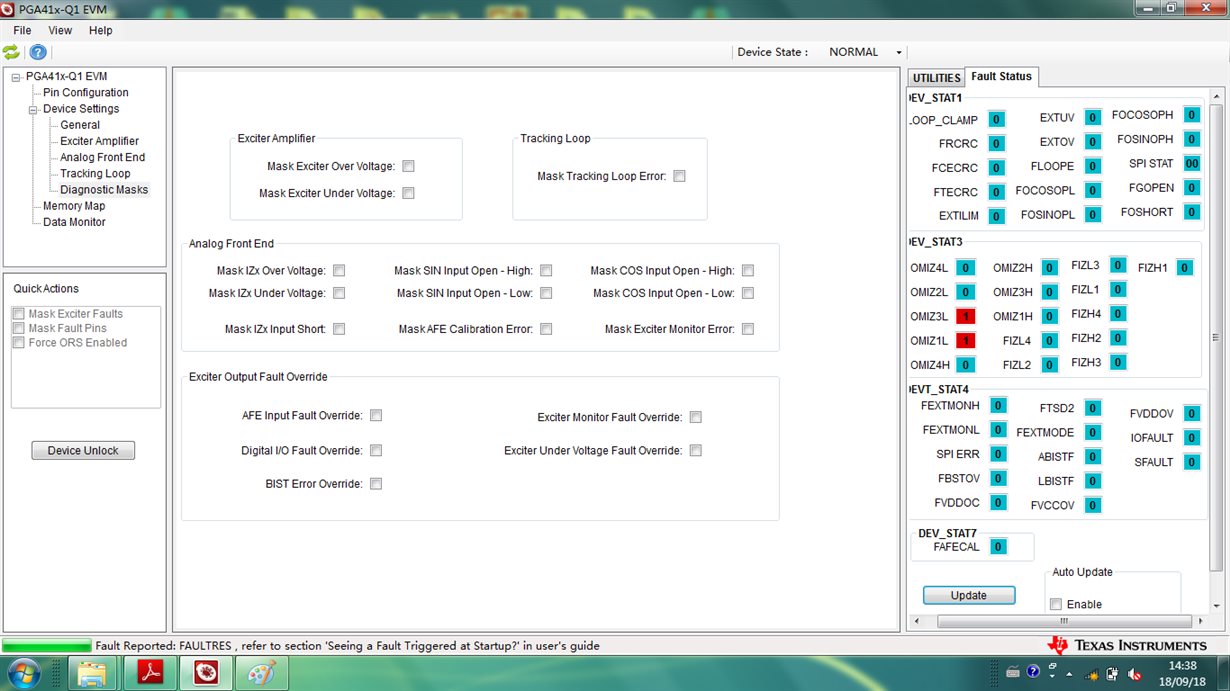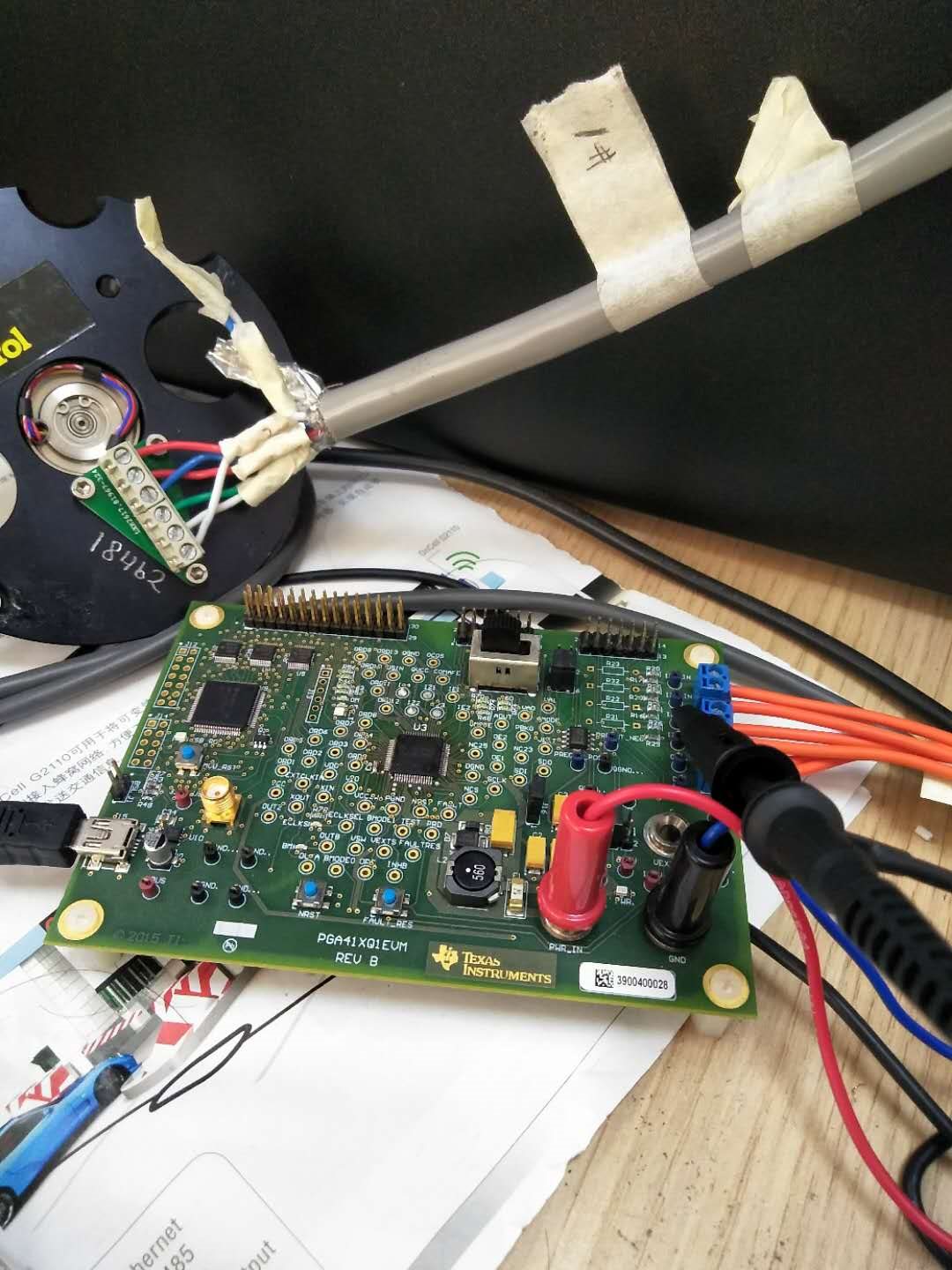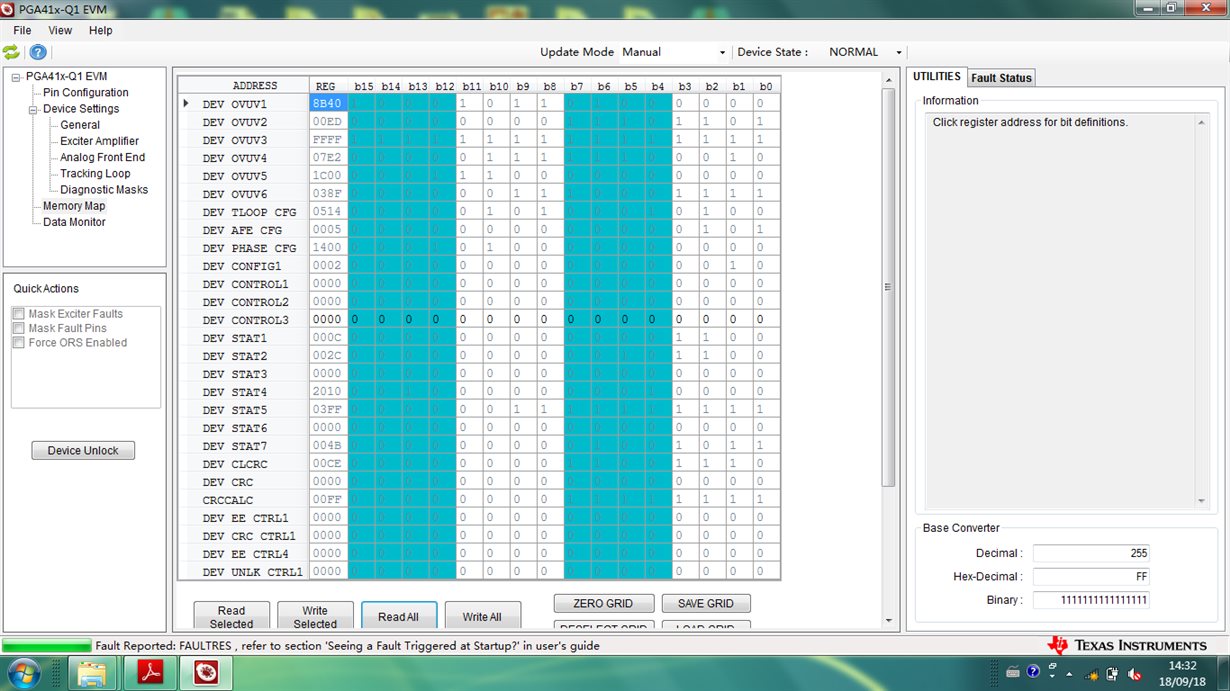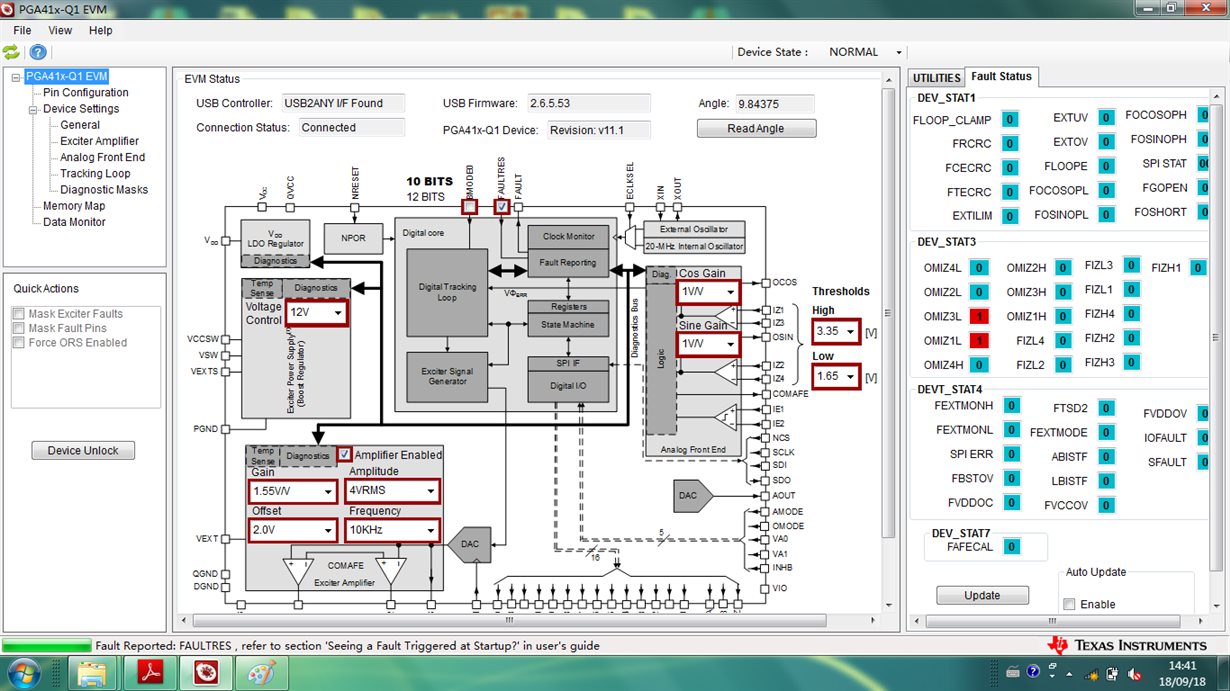Part Number: PGA411Q1EVM
Dear Team:
Because of sensor specification limitations, PGA411 only use input open and input mutual short for the AFE system faults monitored. Whether register can be configured independently for AFE system faults monitored? if EVM not connect senor or input signal failure, can I configuration register the exciter output signal? thanks.
Following are the configured registers:
Figure 1:
Figure 2:
Figure 3:
Figure 4:
Figure 5:


